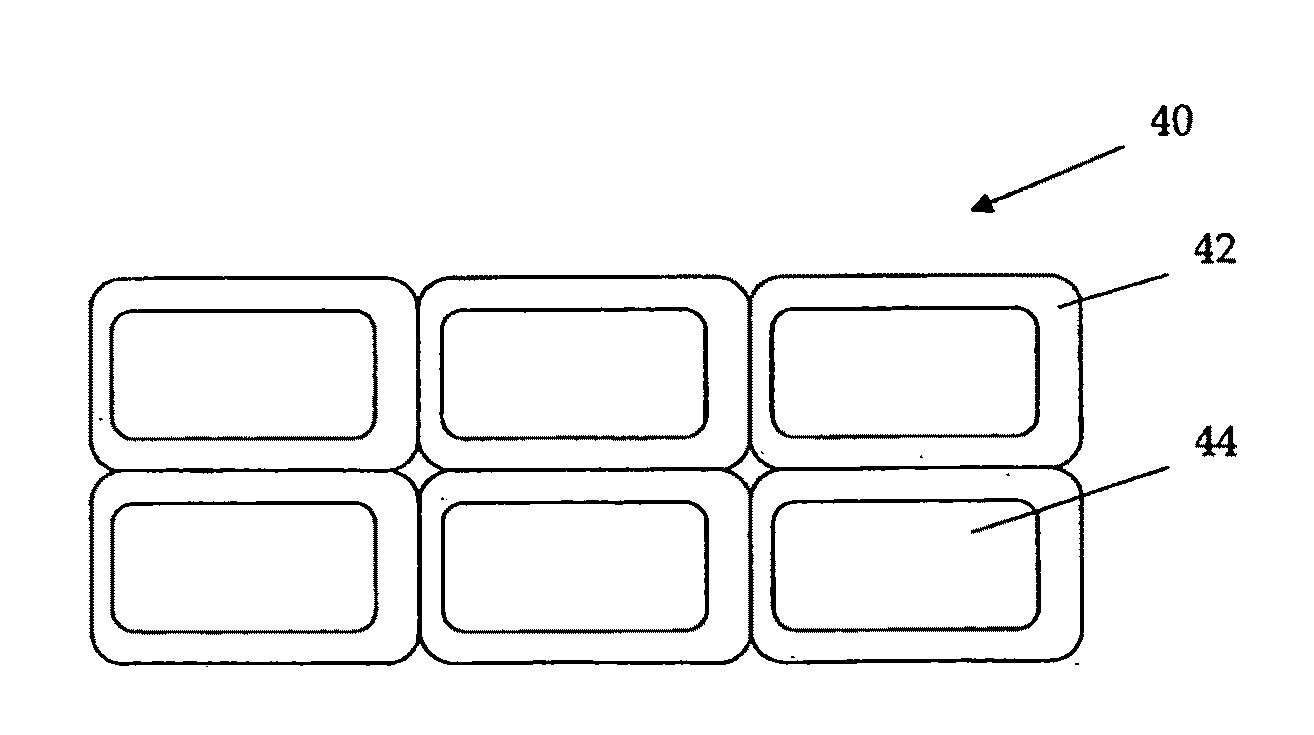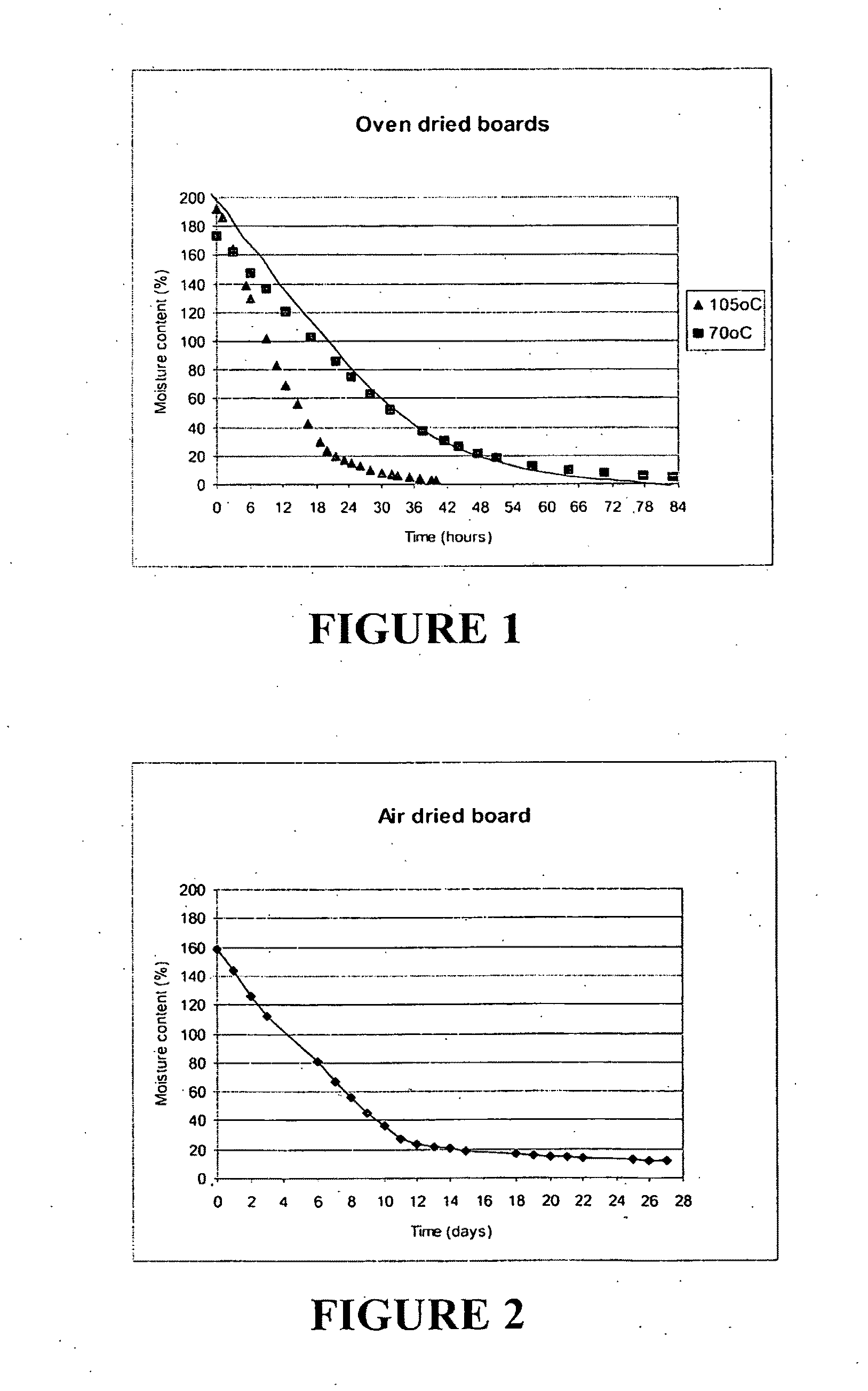Wood drying
- Summary
- Abstract
- Description
- Claims
- Application Information
AI Technical Summary
Benefits of technology
Problems solved by technology
Method used
Image
Examples
example 1
[0144]Green P. radiata sapwood was cut into pieces (8 mm×8 mm×140 mm). Each green wood piece was weighed and then placed in a laboratory high-pressure chamber and subjected to the supercritical carbon dioxide process. Typically, it required 1 minute to either pressurise or depressurise the vessel. Holding times ranged from 0 minutes to 16 minutes. An outlet valve was attached to the end of the vessel to allow rapid depressurisation after the allocated holding time.
[0145]At the completion of the process, all wood samples were placed in a 12% moisture content room to reach equilibrium. Weights and dimensions were recorded and the moisture contents were calculated using a predicted oven dry value.
[0146]The results from the process are shown in FIGS. 7-14. Table 1 below shows the total time taken to reach an average moisture content between 40% and 46% using the supercritical CO2 dewatering process.
TABLE 1AverageTotal runmoisturePressureTemperatureHold timeNumber oftimecontent(atm)(°)(m...
example 2
[0147]Sawn timber from E. nitens is problematic to dry successfully. Both flat-sawn and quarter-sawn E. nitens boards undergo checking, distortion and collapse during drying. It has been found to be essential for eucalyptus species to be carefully air dried.
Small-scale (8 mm×8 mm×140 mm) green E. nitens sapwood and heartwood samples were dewatered using supercritical CO2 to demonstrate the advantage of the process for producing dry wood free of distortion.
[0148]Wood pieces were weighed, then dewatered using supercritical CO2 in multiple 2-minute cycles at 50° C. and either 200 atm or 400 atm. At the completion of the process, all wood samples were placed in a 12% moisture content room to reach equilibrium. Weights were recorded and the moisture contents were calculated using a predicted oven dry value. The results are shown plotted in FIGS. 15-18. In comparison, the results of air drying are shown in FIGS. 19 and 20.
[0149]Referring to FIGS. 15 and 16, the sapwood samples were variab...
example 3
Wood Modification for Enhancement of Biological Durability
[0152]Radiata pine boards (100 mm×50 mm nominal, 1.5 m long), were dewatered using multiple pressure cycles of carbon dioxide as described in examples above. Each board was weighed before being placed in the pressure vessel. Five pressure cycles, at 200 atm and 45° C., were applied and after each CO2 pressure cycle, the boards were weighed. The dewatering process was stopped when the recorded rate of change of weight loss was minimal, approaching zero. When the cycles were completed, the boards were immediately submerged in an aqueous solution of boric acid at a concentration required to give a target concentration in the final wood material, e.g., to achieve a 0.4% w / w retention of boric acid in wood with density 500 kg / m3 required a boric acid solution of 0.33% w / w. The boards can be either immersed under atmospheric pressure and ambient temperature conditions or at other pressures and temperatures, such as vacuum-pressure ...
PUM
| Property | Measurement | Unit |
|---|---|---|
| Temperature | aaaaa | aaaaa |
| Fraction | aaaaa | aaaaa |
| Fraction | aaaaa | aaaaa |
Abstract
Description
Claims
Application Information
 Login to View More
Login to View More - R&D
- Intellectual Property
- Life Sciences
- Materials
- Tech Scout
- Unparalleled Data Quality
- Higher Quality Content
- 60% Fewer Hallucinations
Browse by: Latest US Patents, China's latest patents, Technical Efficacy Thesaurus, Application Domain, Technology Topic, Popular Technical Reports.
© 2025 PatSnap. All rights reserved.Legal|Privacy policy|Modern Slavery Act Transparency Statement|Sitemap|About US| Contact US: help@patsnap.com



